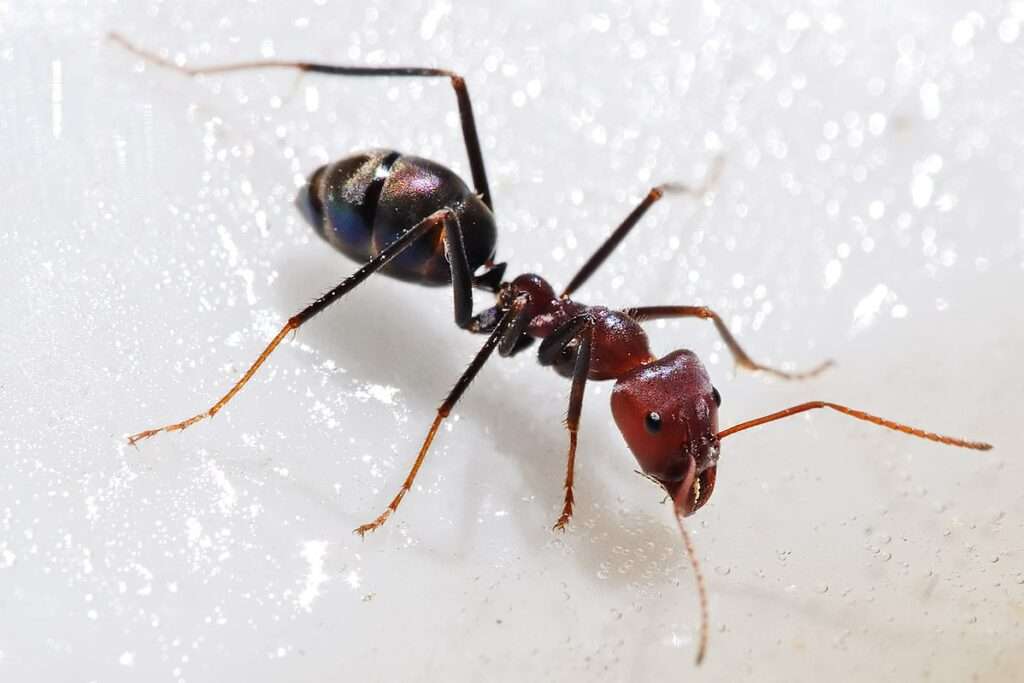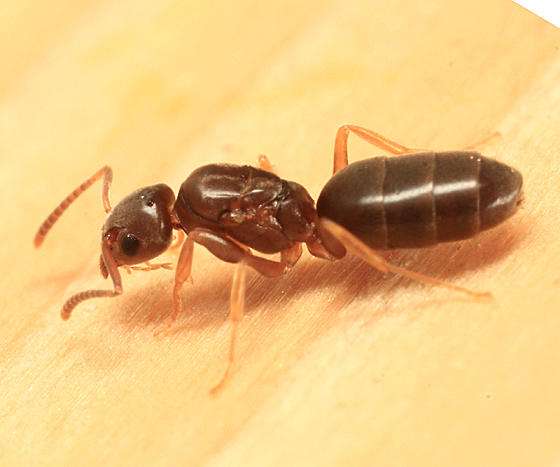
Austrian entomologist Gustav Mayr initially discovered the genus of ants known as Iridomyrmex, also known as rainbow ants because of their blue-green iridescent sheen, in 1862. He assigned the genus to the Formicidae family’s Dolichoderinae subfamily. There are five fossil species among its 79 known species.
Distribution
This genus of ants has a wide geographic distribution across numerous continents. These ants are indigenous to Papua New Guinea, Fiji, Indonesia, New Caledonia, and the Solomon Islands.
Habitat
The majority of these ants like to nest in soil, although some also like to live in or near rotting wood, sandy beaches, and pathways. In sandy soil, certain species will not lay their eggs. Most species build modest mounds with a single entrance for their nests, however some species build huge mounds covered in pebbles with numerous entrances.
Identification
With convex portions to the sides and a central projection, the front edge of the clypeus above the mandibles is extensively modified (this central projection varies from strongly to weakly developed). Compound eyes are positioned distant from the mandibles and somewhat high on the skull. The front border of the clypeus of the majority of the other taxa in this subfamily is either weakly convex, straight, or weakly concave. Only two species, Froggattella and Philidris, have eyes that are low on the head and closer to the clypeus, and Froggattella has a propodeal spiracle that is higher and on the propodeal spines.
Extended diagnosis
Worker
Anterolateral clypeal margin is posterior to the mediolateral region and separated from it by a shoulder. Worker Compound eyes are positioned somewhat posteriorly on the head. Anteromedial clypeal margin has a central projection that may be pointed or rounded (sometimes only feebly projecting).
Queen
The anteromedial clypeal edge has a central projection that is either pointed or rounded (sometimes only feebly protruding); the apical tooth of the mandible is elongate and significantly longer than the subapical; and the queen compound eyes are considerably posterior on the head.
Male
First gastral segment is vertical and does not obscure the petiole in dorsal view in the male mandible, which has only one tooth (the apical) and no denticles (occasionally with up to about 25 denticles).
Diet
Iridomyrmex mostly consumes sweet substances like nectar and honeydew. Workers are especially drawn to seeds with elaiosomes. They forage for insects and other ants to feed to their larvae. These seeds are collected, the elaiosomes are taken out, and the seeds are discarded. These aggressive Iridomyrmex ants’ presence benefits the seedlings that grow from these seeds by increasing their chances of survival. Iridomyrmex frequently preys on termites because colonies might occasionally build their nests in termite mounds.

Interaction with humans
Farmers in rural Australia depend on meat ants because they place animal carcasses on their nests. The entire carcass will be eaten and reduced to bones in a matter of weeks. Iridomyrmex ants, however, are sometimes regarded as pests because they invade homes to feast on food and cause soil disturbance. Because members of a competing colony might repopulate nests or nests nearby that were unaffected, eliminating nests can be challenging. Some species have adapted to urbanization relatively well; in Canberra’s early history, newly built suburbs gave meat ants additional places to nest, and numbers grew. Plantations that are endowed with significant food supplies and backyard gardens are additional elements. Workers impact the biological management of Hemiptera insects, particularly those that produce honeydew,, which is problematic for people who grow citrus.
Table





